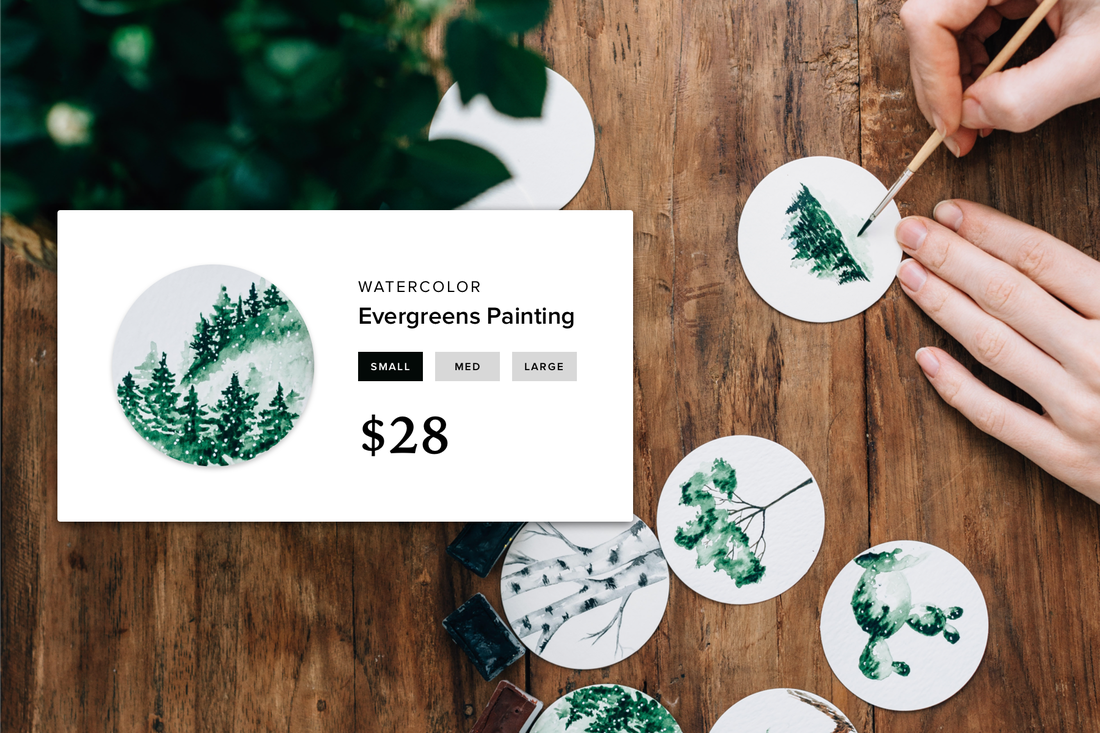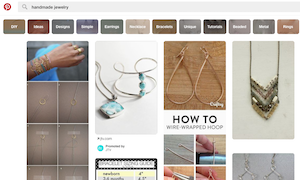As an entrepreneur, you need to be a quick learner. And what better, safer way to learn than from other people's mistakes? That's why we're launching this new series — “What I Wish I Had Known" — to share lessons that successful business owners have learned through experience. We hope their advice prepares and informs you for your own entrepreneurial journey.
Every business needs a website. As Luke Teuma, owner of Lean with Luke, says: “Let's face it, we all usually go straight to the web to learn more about a company before we hire them."
Maria DeMesa, chief design officer and VP of global branding at Body Positive Fitness Alliance, adds, “If you don't have a website, you risk losing customers every day."
We decided to kick off this series by asking three experienced business owners to share what they wish they had known about building a business website.
Here's what they said…
Maria DeMesa, chief design officer and VP of global branding at Body Positive Fitness Alliance, adds, “If you don't have a website, you risk losing customers every day."
We decided to kick off this series by asking three experienced business owners to share what they wish they had known about building a business website.
Here's what they said…
Lesson 1: Carefully consider how the name of your business, products and services and domain name will come across – especially via search engines.
Tammy K. Johnson, speaker and owner of the Female Idea Tank, learned this the hard way. Her company offers business, branding and marketing consulting, but when she started out, she referred to herself on her website as “organization specialist."
“I realized that most people who read that thought I would clean out and organize their cluttered, dirty attic," Johnson explains. “I knew I must make a change that would provide more clarity around the value I bring to my clients." Johnson organized several brainstorming sessions to explore her core strengths – coaching and mentoring, organizational processes, branding and marketing – as well as how she planned to help her clients. Female Idea Tank's name and updated brand messaging now better reflect what her business offers — and she no longer sifts through requests to venture into dusty closets.
“I realized that most people who read that thought I would clean out and organize their cluttered, dirty attic," Johnson explains. “I knew I must make a change that would provide more clarity around the value I bring to my clients." Johnson organized several brainstorming sessions to explore her core strengths – coaching and mentoring, organizational processes, branding and marketing – as well as how she planned to help her clients. Female Idea Tank's name and updated brand messaging now better reflect what her business offers — and she no longer sifts through requests to venture into dusty closets.
Lesson 2: Define and plan for your website goals, especially conversions.
Teuma started out with a decent content marketing plan to drive inbound traffic. What he didn't plan for, though, was creating a user path that would lead to website conversions – the money makers.
“I found myself writing articles and workouts, getting a good response from them, but then not focusing as much on the products or the store page," he explains. “So I wasn't getting as many conversions – paying customers." He points out that business owners should create clear user conversion paths, whether by leading website visitors to a download, an email newsletter sign-up or a product purchase.
“Sites shouldn't just look good," he says. “They should serve an important function for your business." This function could be improving brand awareness, inspiring social shares, building an email list or selling products. Identify the types of conversions you're looking for and plan how to make them happen.
“I found myself writing articles and workouts, getting a good response from them, but then not focusing as much on the products or the store page," he explains. “So I wasn't getting as many conversions – paying customers." He points out that business owners should create clear user conversion paths, whether by leading website visitors to a download, an email newsletter sign-up or a product purchase.
“Sites shouldn't just look good," he says. “They should serve an important function for your business." This function could be improving brand awareness, inspiring social shares, building an email list or selling products. Identify the types of conversions you're looking for and plan how to make them happen.
Lesson 3: When it comes to design, simplicity and clarity are everything.
“I wish I knew how simplicity made the site look more professional," says Teuma. “At first my site looked busy and immature. As time has gone on, I've updated and simplified the site's design." DeMesa agrees.
“If I've learned anything in building websites, it's keep it simple," she says. “Don't overcrowd your homepage. Don't use more than two or three fonts. Keep your colors complimentary and not too loud." Websites need to walk the fine line between overwhelming and boring potential customers. Choosing a simple, beautiful theme can help.
Provide clear direction on your website by including a prominent navigation menu, DeMesa also suggests. This keeps visitors on your site by helping them quickly find what they need.
“If I've learned anything in building websites, it's keep it simple," she says. “Don't overcrowd your homepage. Don't use more than two or three fonts. Keep your colors complimentary and not too loud." Websites need to walk the fine line between overwhelming and boring potential customers. Choosing a simple, beautiful theme can help.
Provide clear direction on your website by including a prominent navigation menu, DeMesa also suggests. This keeps visitors on your site by helping them quickly find what they need.
Lesson 4: Check your site on mobile.
What looks great on a desktop may not translate well to a tablet or phone. That's why Teuma immediately checks his website on mobile devices after updating it.
“Most of my users see my content on their phones," he explains. “Screen resolutions can still vary a lot from a computer to people's phones, so I always check right away."
“Most of my users see my content on their phones," he explains. “Screen resolutions can still vary a lot from a computer to people's phones, so I always check right away."
Lesson 5: Don't ignore analytics.
Stats about user behavior on your website can teach you a lot about how visitors use your site, including any roadblocks to conversion.
“I've learned to look at the stats...especially which pages are being viewed or not," says Teuma. “I can see which pages capture my users' attention which helps me make decisions about my site's structure and which pages I should promote more when adding new content."
“I've learned to look at the stats...especially which pages are being viewed or not," says Teuma. “I can see which pages capture my users' attention which helps me make decisions about my site's structure and which pages I should promote more when adding new content."
Lesson 6: DIY doesn't mean you have go it alone.
As an entrepreneur, you must carefully manage your time. As the saying goes, time is money. Don't waste yours. If you aren't sure how to do something on your website, there's no need to learn – or fix – everything by yourself. Johnson, for instance, wishes she had learned earlier to reach out for support right away when she needed website help.
“Sometimes I would face a new issue I didn't quite know how to fix," she says. “I would often struggle for hours before finally giving up and contacting the Weebly support team. They were always able to help me, often within a matter of minutes, and I realized I could have saved valuable time if I had simply reached out sooner."
Johnson continues to update and refine her website and, with aid from Weebly's support team, she's been able to do it herself, without paying for outside help.
“The great thing I've found about building your own website is that you can update it quickly without having to wait for a third party," Johnson says. “My advice to entrepreneurs who are considering building a website is to DO IT. Services with drag and drop website builders have made it so simple. They even offer attractive templates you can use to make building a website simple, fun and rewarding."
“Sometimes I would face a new issue I didn't quite know how to fix," she says. “I would often struggle for hours before finally giving up and contacting the Weebly support team. They were always able to help me, often within a matter of minutes, and I realized I could have saved valuable time if I had simply reached out sooner."
Johnson continues to update and refine her website and, with aid from Weebly's support team, she's been able to do it herself, without paying for outside help.
“The great thing I've found about building your own website is that you can update it quickly without having to wait for a third party," Johnson says. “My advice to entrepreneurs who are considering building a website is to DO IT. Services with drag and drop website builders have made it so simple. They even offer attractive templates you can use to make building a website simple, fun and rewarding."
 Anne Shaw Anne is a marketing consultant who specializes in content strategy. Before becoming her own boss, she led the marketing team for a Fortune 500 brand.
Anne Shaw Anne is a marketing consultant who specializes in content strategy. Before becoming her own boss, she led the marketing team for a Fortune 500 brand.





